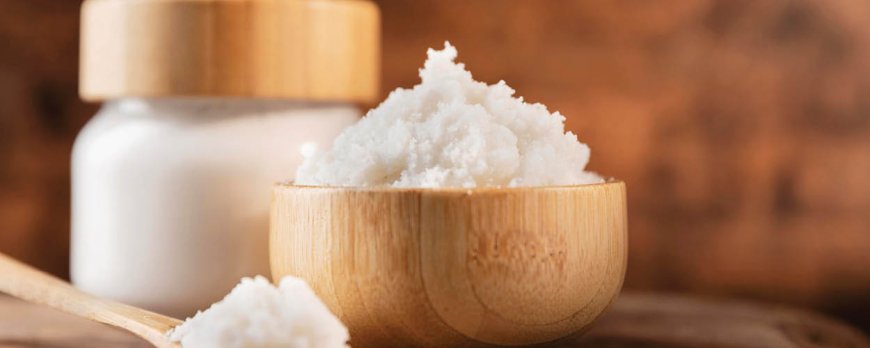PEA and Its Application in Dental Pain Relief
Explore the use of PEA and Its Application in Dental Pain Relief, an innovative solution that offers optimal gum health and comfort.

PEA and Its Application in Dental Pain Relief
Dental pain can be a cause of significant discomfort and distress. In recent years, there has been growing interest in the use of palmitoylethanolamide (PEA), a natural supplement known for its potential benefits in providing dental pain relief.
Key Takeaways:
- PEA is a natural supplement that acts as an anti-inflammatory and pain reliever.
- It works by modulating glial cells to reduce inflammation and alleviate pain.
- PEA has been found to be beneficial for various chronic pain conditions, including dental pain.
- It is non-addictive and has no known significant side effects.
- The recommended dosage for PEA is to start with 1 capsule morning and night, then increase to 2 capsules morning and night.

Understanding PEA and Its Mechanism of Action
Palmitoylethanolamide (PEA) is a fatty acid molecule naturally found in the body that acts as an anti-inflammatory and pain reliever. It plays a crucial role in modulating glial cells, which are central nervous system cells responsible for releasing inflammatory substances that amplify pain. By targeting these glial cells, PEA helps to reduce inflammation and alleviate pain.
PEA's mechanism of action involves activating the peroxisome proliferator-activated receptor-alpha (PPAR-α), which is a nuclear receptor responsible for regulating various cellular processes, including inflammation and pain response. When PEA activates PPAR-α, it stimulates the production of anti-inflammatory compounds, promotes tissue repair, and reduces the release of pro-inflammatory substances.
Furthermore, PEA also acts on other pathways involved in pain modulation, such as the endocannabinoid system and the transient receptor potential vanilloid type 1 (TRPV1) channel. These interactions contribute to PEA's ability to provide pain relief, especially in chronic pain conditions.
The Mechanism of Action of PEA:
- Modulation of glial cell activity
- Activation of PPAR-α
- Stimulation of anti-inflammatory compound production
- Promotion of tissue repair
- Reduction of pro-inflammatory substances release
- Interaction with the endocannabinoid system
- Interaction with TRPV1 channel
Overall, PEA's multifaceted mechanism of action makes it a promising solution for managing dental pain and other chronic pain conditions. By addressing inflammation and modulating pain pathways, PEA offers a natural and effective approach to pain relief without the risk of addiction or significant side effects.

The Benefits of PEA for Dental Pain Relief
PEA offers several benefits when it comes to relieving dental pain, making it an attractive option for individuals seeking natural pain relief. As a natural supplement, PEA works by reducing inflammation and modulating glial cells in the central nervous system, which helps alleviate pain. Unlike traditional pain medications, PEA is non-addictive and has no known significant side effects.
PEA has been found to be beneficial for various chronic pain conditions, including dental pain. Whether it's gum pain, tooth sensitivity, or nerve-related tooth pain, PEA can provide relief. By targeting the underlying cause of the pain, PEA helps reduce discomfort and promote optimal gum health.
- PEA has anti-inflammatory properties that help reduce gum inflammation and alleviate pain.
- PEA modulates glial cells, reducing the release of inflammatory substances and minimizing pain signals.
- PEA promotes the body's natural healing processes, supporting gum tissue repair and reducing discomfort.
The recommended dosage for PEA is to start with 1 capsule morning and night for 7 days, then increase to 2 capsules morning and night. It is important to note that individual results may vary, and it may take time to experience the full benefits of PEA. Positive results may be experienced within 4-6 weeks, but maximum pain reduction may take up to 3 months.
PEA Dosage and Treatment Options:
- Start with 1 capsule morning and night for 7 days.
- After the initial week, increase the dosage to 2 capsules morning and night.
- For topical relief, PEA is also available as a cream that can be applied directly to the affected area.
To obtain PEA for dental pain relief, you do not need a prescription. PEA supplements can be found in health stores or online. Options include both capsules and topical creams, allowing individuals to choose the most convenient and effective method for their needs. It is important to follow the recommended dosage and treatment options for optimal results.
PEA Dosage and Treatment Options
When it comes to using PEA for dental pain relief, it is important to follow the recommended dosage to experience maximum benefits. PEA is available in capsule form, and the recommended initial dosage is 1 capsule in the morning and 1 capsule at night for the first 7 days. After the initial week, the dosage can be increased to 2 capsules in the morning and 2 capsules at night.
Positive results from PEA treatment may be experienced within 4-6 weeks, but it is important to note that maximum pain reduction may take up to 3 months. As with any pain relief treatment, individual results may vary, and it is important to be consistent with taking PEA as directed.
PEA is available without a prescription and can be purchased in the form of capsules or as a topical cream. It is recommended to consult with a healthcare professional before starting any new pain relief regimen, especially if you have any pre-existing medical conditions or are currently taking any medications.
PEA Dosage Summary:
- Start with 1 capsule in the morning and 1 capsule at night for the first 7 days.
- After the initial week, increase the dosage to 2 capsules in the morning and 2 capsules at night.
- Positive results may be experienced within 4-6 weeks, but maximum pain reduction may take up to 3 months.
- PEA is available without a prescription and can be purchased as capsules or as a topical cream.
- Consult with a healthcare professional before starting any new pain relief regimen.
With the proper dosage and treatment regimen, PEA has the potential to provide natural pain relief for dental pain. However, it is always advisable to consult with a healthcare professional to determine the most suitable dosage and treatment options based on individual needs and circumstances.

Clinical Studies on PEA for Dental Pain Relief
Numerous clinical studies have been conducted to explore the effectiveness of PEA in providing dental pain relief, with promising results. PEA, or palmitoylethanolamide, is a natural supplement known for its anti-inflammatory and pain-relieving properties. It has been found to be beneficial for various chronic pain conditions, including dental pain.
PEA works by modulating glial cells, which are central nervous system cells that release inflammatory substances that amplify pain. By reducing inflammation, PEA helps alleviate pain in the gums and teeth. It has shown potential in relieving pain from conditions such as gum inflammation, toothaches, and post-dental procedure discomfort.
PEA is non-addictive and has no known significant side effects. It can be obtained without a prescription and is available in capsule or topical cream form. The recommended dosage for PEA is to start with 1 capsule in the morning and 1 capsule at night for the first 7 days, then increase to 2 capsules in the morning and 2 capsules at night. Positive results may be experienced within 4-6 weeks, but maximum pain reduction may take up to 3 months.
PEA offers a natural and effective option for dental pain relief. Its ability to modulate inflammation and provide relief without addictive properties makes it a promising alternative to traditional pain medications. With the support of clinical studies, PEA's potential in alleviating dental pain is being recognized and explored further.
PEA for Neuropathic Dental Pain
Neuropathic dental pain, often characterized by persistent sharp or shooting pain, can be effectively managed with the use of PEA. PEA, or palmitoylethanolamide, is a natural supplement that acts as an anti-inflammatory and pain reliever. Derived from fatty acid molecules naturally found in the body, PEA works by modulating glial cells in the central nervous system, which release inflammatory substances that amplify pain.
PEA has been found to provide relief for a variety of chronic pain conditions, including dental pain. Whether caused by nerve damage, tooth sensitivity, or other underlying issues, neuropathic dental pain can greatly impact one's quality of life. Fortunately, PEA offers a non-addictive alternative for managing such pain, without the risk of dependence or significant side effects.
When incorporating PEA into your dental pain relief regimen, it is important to follow the recommended dosage. It is generally advised to start with 1 capsule of PEA in the morning and 1 capsule at night for the first 7 days, then increase the dosage to 2 capsules in the morning and 2 capsules at night. While positive results may be experienced within 4-6 weeks, it may take up to 3 months to achieve maximum pain reduction.
Benefits of PEA for Neuropathic Dental Pain:
- Reduces inflammation and calms overactive glial cells in the central nervous system
- Provides natural pain relief without the risk of addiction or significant side effects
- Helps manage persistent sharp or shooting pain associated with neuropathic dental pain
- Supports overall gum health and alleviates gum pain
PEA can be obtained without a prescription and is available in both capsule form and as a topical cream. It is important to note that individual experiences may vary, and it is always recommended to consult with a healthcare professional before starting any new supplement regimen. With its natural properties and proven efficacy, PEA offers a promising solution for individuals seeking relief from neuropathic dental pain.
PEA as a Non-Addictive Alternative
Unlike many conventional pain medications, PEA offers a non-addictive alternative for individuals seeking long-term dental pain relief. As a natural supplement, PEA works with the body's own mechanisms to reduce inflammation and alleviate pain, making it an attractive option for those who prefer a more holistic approach to pain management.
PEA, or palmitoylethanolamide, is a fatty acid molecule that occurs naturally in the body and can also be obtained through certain foods. It acts as an anti-inflammatory by modulating glial cells, which are central nervous system cells that release inflammatory substances that amplify pain. By targeting these cells, PEA helps to reduce pain signals and promote overall comfort.
In addition to its non-addictive nature, PEA offers other advantages as a pain relief option. It has no known significant side effects, making it a safe choice for long-term use. Its natural properties also mean that it can be easily incorporated into existing dental pain relief regimens without the worry of drug interactions or dependency.
For individuals who are concerned about the potential risks and side effects associated with conventional pain medications, PEA provides a viable alternative. It offers a natural, non-addictive way to manage dental pain and promote overall oral health. Whether used as a standalone treatment or in conjunction with other pain management strategies, PEA has the potential to provide long-term relief for those suffering from dental pain.

Timeframe and Expectations with PEA
It is important to have realistic expectations when using PEA for dental pain relief, as the timeframe for experiencing noticeable improvements may vary. While some individuals may start to feel relief within a few weeks, others may require several months to achieve maximum pain reduction. Each person's response to PEA treatment can be influenced by factors such as the severity of the dental pain, overall health, and individual metabolism.
When starting a PEA regimen, it is recommended to begin with a dosage of 1 capsule in the morning and 1 capsule at night for the first week. This allows the body to adjust to the supplement. After the initial week, the dosage can be increased to 2 capsules in the morning and 2 capsules at night for optimal pain relief. It is important to follow the recommended dosage and not exceed the suggested amount.
While some individuals may experience positive results within the first month of PEA treatment, it is crucial to continue the regimen for an extended period to fully assess its effectiveness. Patience is key when using PEA for dental pain relief, as it may take up to 3 months to achieve maximum pain reduction. It is advisable to consult with a healthcare professional for personalized guidance and to monitor progress throughout the treatment.
Key Takeaways:
- PEA is a natural supplement that offers anti-inflammatory and pain-relieving properties.
- Response to PEA treatment may vary, with some individuals experiencing relief within weeks and others requiring several months.
- Start with a lower dosage and gradually increase to the recommended amount for optimal pain relief.
- Patience is important when using PEA for dental pain relief, as maximum pain reduction may take up to 3 months.
- Consult with a healthcare professional for personalized guidance and to monitor progress throughout the treatment.
Overall, while PEA can be a valuable addition to a dental pain relief regimen, it is important to have realistic expectations and give the supplement adequate time to work. By following the recommended dosage and seeking guidance from a healthcare professional, individuals can optimize their experience with PEA and potentially benefit from its natural pain-relieving properties.
Obtaining PEA without a Prescription
PEA supplements can be obtained without a prescription, making them easily accessible for individuals seeking dental pain relief. Whether you prefer the convenience of capsules or the targeted application of a topical cream, PEA is readily available for purchase.
When looking for PEA supplements, it is important to choose a reputable brand that ensures high-quality and purity. Look for products that have been third-party tested for potency and safety. This will give you peace of mind knowing that you are using a reliable supplement.
Where to find PEA supplements
PEA supplements can be found in various health food stores, pharmacies, and online retailers. Trusted online platforms offer a wide range of PEA products, allowing you to compare options and read customer reviews before making a purchase. Remember to check the ingredients list and dosage instructions before selecting a product that best suits your needs.
- Look for PEA supplements that contain pure palmitoylethanolamide without any unnecessary fillers or additives.
- Consider the form of PEA that best fits your preferences, whether it's capsules for oral consumption or a topical cream for targeted application.
- Read customer reviews to gauge the effectiveness of the product and ensure its suitability for dental pain relief.
By incorporating PEA into your dental pain relief regimen, you can benefit from its natural pain-relieving properties without the need for a prescription. Consult with your healthcare provider to determine the right dosage and treatment option for your specific condition. With easy access to PEA supplements, you can take control of your dental pain management and promote optimal oral health.
Incorporating PEA into Your Dental Pain Relief Regimen
To make the most out of PEA's potential benefits for dental pain relief, it is important to incorporate it into a comprehensive pain management regimen. Here are some steps to help you effectively integrate PEA into your routine:
- Consult with your dentist: Before starting any new treatment, it is essential to consult with your dentist. They can assess your specific dental pain needs and provide guidance on the appropriate use of PEA.
- Follow recommended dosage: The recommended dosage for PEA is to start with 1 capsule morning and night for 7 days, then increase to 2 capsules morning and night. It is important to follow the recommended dosage to ensure effective pain relief.
- Be patient: While some individuals may experience positive results within a few weeks, it is important to note that maximum pain reduction with PEA may take up to 3 months. Therefore, it is crucial to be patient and consistent with your PEA regimen.
- Consider topical application: PEA is available not only in capsule form but also as a topical cream. Depending on your preference and the nature of your dental pain, you may choose to incorporate topical PEA application into your routine for targeted relief.
By incorporating PEA into your dental pain relief regimen, you can harness its natural anti-inflammatory and pain-relieving properties for optimal relief. Remember to consult with your dentist, follow the recommended dosage, be patient with the results, and consider exploring topical application options. With a comprehensive approach, PEA can be a valuable addition to your pain management plan.
Conclusion
In conclusion, PEA offers a promising solution for individuals seeking dental pain relief, providing a natural and non-addictive alternative with potential benefits in alleviating discomfort and promoting optimal gum health.
PEA, or palmitoylethanolamide, is a natural supplement that acts as an anti-inflammatory and pain reliever. It is a fatty acid molecule naturally found in the body and can also be obtained through certain foods. PEA works by modulating glial cells, which are central nervous system cells that release inflammatory substances that amplify pain. Research has shown that PEA can be effective in managing chronic pain conditions such as carpal tunnel syndrome, diabetic neuropathy, fibromyalgia, migraines, osteoarthritis, and dental pain.
One of the main advantages of PEA is its non-addictive nature. Unlike opioid-based pain medications, PEA does not carry the risk of dependence or withdrawal symptoms. Additionally, PEA has no known significant side effects, making it a safe option for long-term use.
To experience the full benefits of PEA, it is recommended to follow the proper dosage. Starting with 1 capsule morning and night for the first 7 days and then increasing to 2 capsules morning and night can help achieve optimal results. While positive effects may be felt within 4-6 weeks, it may take up to 3 months to achieve maximum pain reduction.
PEA can be obtained without a prescription and is available in both capsule and topical cream forms. This accessibility makes it easy for individuals to incorporate PEA into their dental pain relief regimen. Whether used as a stand-alone treatment or in combination with other therapies, PEA provides an alternative approach to managing dental pain naturally.
FAQ
Is PEA a natural supplement?
Yes, PEA is a natural supplement that is naturally found in the body and can also be obtained through certain foods.
How does PEA work to relieve pain?
PEA works by modulating glial cells, which are central nervous system cells that release inflammatory substances that amplify pain.
What chronic pain conditions can PEA benefit?
PEA has been found to be beneficial for chronic pain conditions such as carpal tunnel syndrome, diabetic neuropathy, fibromyalgia, migraines, osteoarthritis, and dental pain.
Are there any known significant side effects of PEA?
No, PEA is non-addictive and has no known significant side effects.
What is the recommended dosage for PEA?
The recommended dosage for PEA is to start with 1 capsule morning and night for 7 days, then increase to 2 capsules morning and night.
How long does it take to see results with PEA?
Positive results may be experienced within 4-6 weeks, but maximum pain reduction may take up to 3 months.
Do I need a prescription to obtain PEA?
No, PEA can be obtained without a prescription and is available as a capsule or as a topical cream.

















































































































